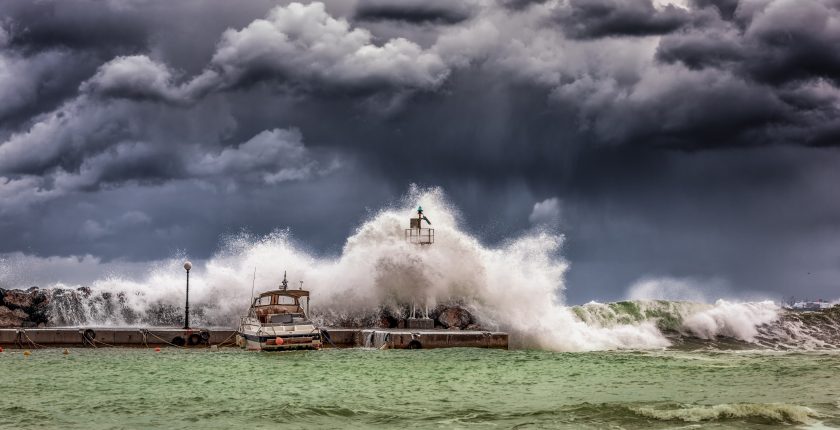Towards Integrating Indigenous Knowledge into Climate Adaption Against Hydroclimatic Disasters
Mountain Environments More Affected by Rising Global Temperatures
Rising global temperatures are negatively affecting ecosystems around the world. Rising sea levels and warming sea temperatures are threatening low-lying habitats such as wetlands and mangrove ecosystems and causing the loss of marine breeding grounds. On land, climate change has increased the occurrence of droughts and extreme weather events, causing desertification and a higher frequency of flash floods. All these regions across the world will need to adapt in the face of the profound environmental changes caused by climate change.
High mountain environments are especially sensitive to rising global temperatures and are being affected at a faster rate. Even if rising global temperatures are limited to 1.5 °C, high mountains may experience as much as a 3 °C rise (IPCC). One of the main reasons for this is linked to the loss of snow on ice which exposes land surfaces. Land surfaces warm up much quicker than snow and ice, absorbing the sun’s heat rather than reflecting it. When more land surface is exposed, temperatures continue to rise and continue to reduce the snow cover on mountains in a constant cycle of warming and melting. This can lead to flash floods, landslides, and contaminated water supplies. The struggle to adapt to this new reality imposes itself on the communities whose livelihoods are inextricably linked to their environment.
Nepal 3, 624 New Glacial Lakes, a Severe Risk if Flash Flooding
With the highest mountains in the world, Nepal is the epicentre of this struggle to adapt to this specific aspect of climate change in the mountains. In particular, the country is dealing with hydroclimatic disasters linked to the melting of the country’s many glaciers. The Hindu Kush Himalayas hold more than 30,000 miles of glacier ice, the most of any country in the world. This ice supports over 240 million people who live within the valleys and plateaus as glaciers provide an essential freshwater supply in the dry season. As meltwater is usually a seasonal occurrence, farming, husbandry, and whole communities have been built around access to these previously reliable glacier melts. However, shrinking glaciers are making living within the shadow of glaciers more challenging. With glaciers shrinking at a faster rate, the melt season has subsequently become shorter decreasing the availability of fresh water during the dry season.
Glacier melt not only leads to less fresh water but also poses a substantial flood risk. This is because glacial lakes are growing larger as more snow and ice melt, increasing the hydrostatic pressure on dams that were not originally built to withstand such pressure. This then intensifies the risk that these dams will suddenly burst and cause devastating flash floods. A survey conducted by UNDP and the International Centre for Integrated Mountain Development (ICIMOD) recorded 3,624 new glacial lakes, 47 of them categorised as high risk (Nepal Times, 2021). One, in particular, the Thulagi glacial lake has grown due to glacier melt. If it burst this glacial lake would flood 100km downstream affecting towns, highways, and hydroelectric projects.
In response, cascade projects are being built which would mitigate against flooding if dams burst. Further projects to improve resilience against glacier melt also include the expanded use of Geospatial Information Technology to guide climate resilience-building projects.
Remote Communities Already Adapting
However, Nepal is also starting to recognise its wealth and power of indigenous knowledge to guide resilience against glacier melt. Particularly in respect to how to create a harmonious and beneficial co-existence between human activity and nature.
Indigenous knowledge, developed by the communities living in intimate proximity to the mountains and glaciers, has the value of respecting nature woven into their explanations and responses to climate change. For example, communities living in some of Nepal’s most remote regions, have based their explanations on their observations of human behaviour desecrating nature, rather than scientific explanations. The result is that many communities have begun to adapt, before knowing the scientific explanations for their changing climate. This nature-forward adaption includes creating easy-to-rebuild goat tracks, instead of relying on main roads that are hard to rebuild after flash floods , using wild medicinal plants to treat illness when access to health facilities is disrupted, and constructing low-cost housing using local knowledge and unique local materials which are easy to replace.
Integrating this knowledge with scientific approaches by meaningfully including communities with nature-based knowledge has become an important topic. So too is the need and desire to showcase the power of traditional knowledge for creating sustainable practices that help communities better adapt to hydroclimatic disasters.
Bibliography
IPCC,. (2021) Climate change widespread, rapid, and intensifying https://www.ipcc.ch/site/assets/uploads/2018/03/SREX-Chap3_FINAL-1.pdf
WWF,. (2021) The effect of climate change https://www.wwf.org.uk/learn/effects-of/climate-change
Choekyi Lama, Sonam,. (20th October 2021) Climate change is a disaster in the Nepal Himalaya https://www.nepalitimes.com/banner/climate-change-is-a-disaster-in-the-nepal-himalaya/
Chatham House, (1st October 2021) Pasang Yangjee Sherpa on how climate change is affecting the people of Nepal https://www.chathamhouse.org/publications/the-world-today/2021-10/postcard-himalayas-hard-rain-already-falling
The Kathmandu Post,. (26th November 2021) Nepal to raise loss and damage and mountain issues at UN climate summit https://kathmandupost.com/climate-environment/2021/05/29/nepal-to-raise-loss-and-damage-and-mountain-issues-at-un-climate-summit
The Kathmandu Post,. (24th May 2021) Seeking solutions from within https://kathmandupost.com/columns/2021/05/24/seeking-solutions-from-within
Government of Nepal,. (February 2016) Indigenous and Local Knowledge and Practices for Climate Resilience in Nepal http://isetnepal.org.np/wp-content/uploads/2018/11/Indigenous-and-LocaL-Knowledge-and-Practices-for-Climate-Resilience-in-Nepal.pdf

